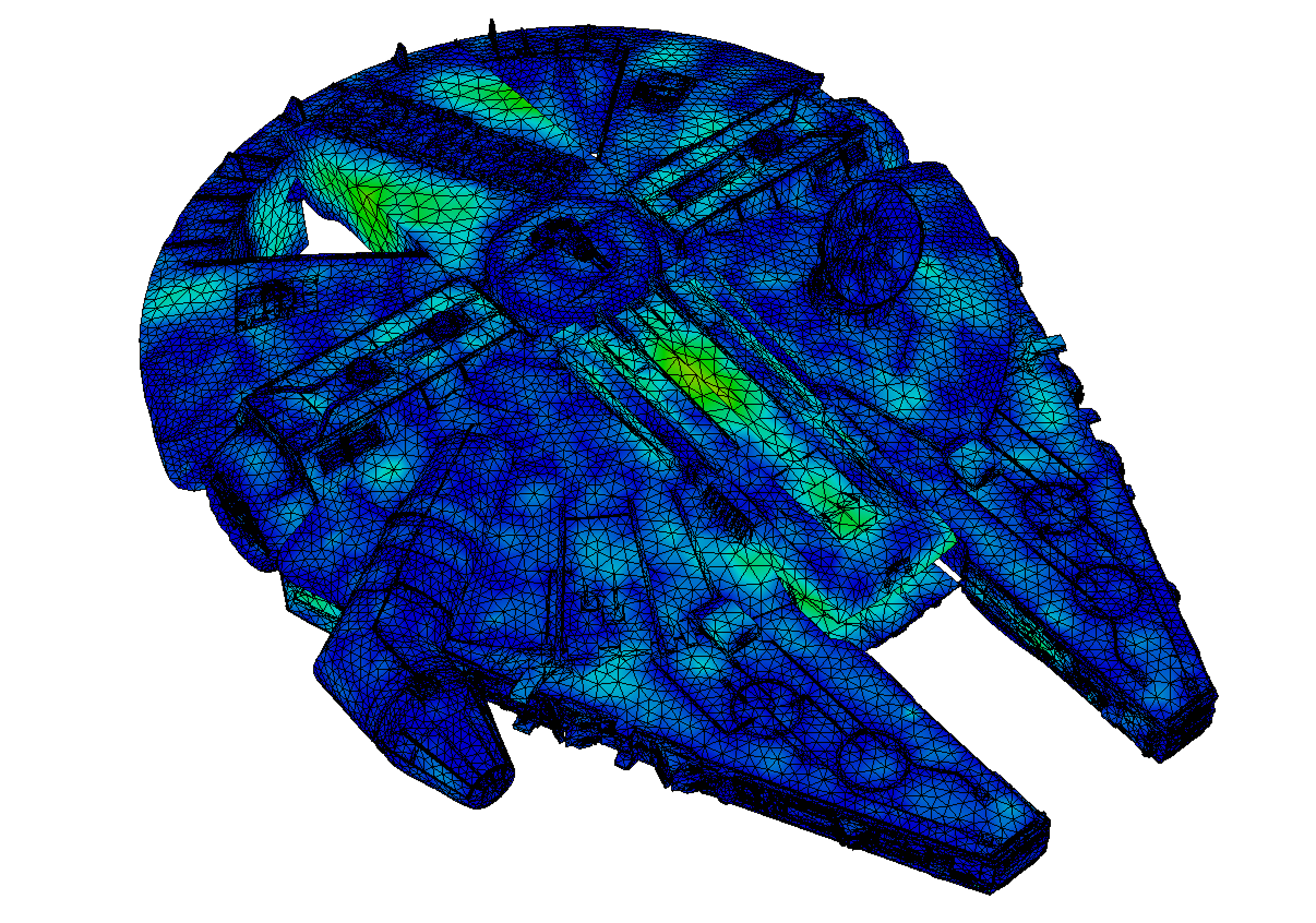2.3. A first encounter with nonlinear problems¶
This section deals with nonlinear variational problems, essentially exemplifying the use of Newton’s method in this context. We shall retrieve similar techniques later on, in our study of non linear elasticity problems or the Navier-Stokes equations.
A good reference about the use of Newton’s method in multiple contexts is [Deu11].

2.3.1. The Newton-Raphson method¶
Let \(X, Y\) be two Banach spaces and let \(F : X \to Y\) be a differentiable mapping; we search for a solution \(x \in X\) to the (a priori nonlinear) equation:
To achieve this goal, the Newton-Raphson method starts from an initial guess \(x_0\), and then produces a series of points \(x^n\), \(n = 0,...,\) where each successive term \(x^{n+1}\) is obtained from \(x^n\) via application of a "small" correction \(h^n\):
The correction \(h^n\) is calculated from a linearization of the original equation (2.1) about the current iterate \(x^n\):
in other terms, we solve the following equation:
The Newton-Raphson method reads as follows.
Initialization: Select an initial guess \(x^0 \in X\).
For \(n=0,\ldots,\) until convergence:
Calculate the solution \(h^n\) to the linearized equation (2.2).
Set \(x^{n+1} = x^n + h^n\).
This procedure converges quite fast—in principle—to one solution to the equation (3.2.3). Let us em- phasize on one major drawback of the Newton-Raphson procedure. Depending on the particular function A(x) and the initial guess x0, this procedure may experience difficulties in convergence.
Talk about continuation – sometimes called "homotopy" in the literature.
2.3.2. An application example: a non linear Laplace equation¶
This problem originates from magnetostatics.
